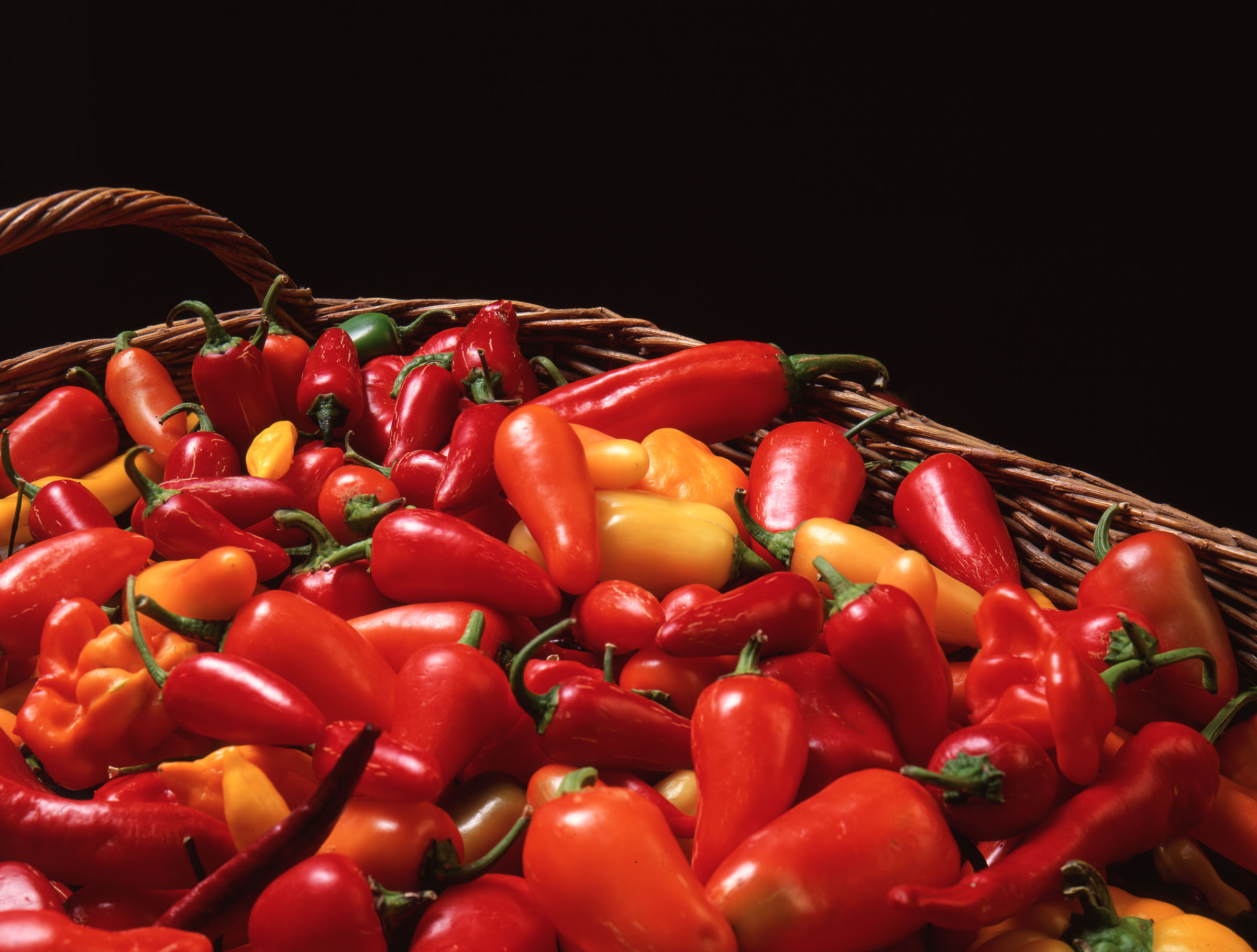
State Pepper and Native Pepper
Jalapeño and Chiltepín
Adopted: 1995 and 1997

Texas has not one but two official pepper designations: Jalapeño is the state pepper, while chiltepín is the state native pepper. Besides both being designated state peppers, the resemblance between the two is small.
The Scoville Heat Units scale ranks jalapeños between 2,500 and 8,000; the chiltepín’s range is 40,000 to 100,000. That means the jalapeño is much milder than the chiltepín. While jalapeños are sprinkled generously over cheese sauce and tortilla chips for “ballpark nachos” in stadiums across the state, one or two pods of chiltepín suffice to spice up a stew or chili.
The jalapeño is sometimes called chile gordo, “gordo” being Spanish for “fat.” Chiltepín’s name is used interchangeably with “pequin,” which is a possible derivative of pequeño, Spanish for “small.”
Texas is one of the top three states in jalapeño production. The chiltepín, Texas’ only native pepper, is not a candidate for large-scale farming, based on limited market demand and labor-intensive hand-harvesting of its bushes. The 1997 Legislature’s resolution noted that chiltepín “grows wild in our temperate climate and is undeniably American and Texan,” but its fruit may be scarce, as birds are also fans of the pepper. The chiltepín’s 1997 resolution notes: “Even the mockingbird, our state bird, recognizes the appeal of this piquant food, choosing to dine on it almost exclusively when the pepper is in season.”
Chiltepíns “can be a bit fiery for use in fine dining,” says Ross Burtwell, executive chef of Cabernet Grill in Fredericksburg. “But from time to time I sneak them into something,” like his appetizer of chiltepín salsa, charred onions, a seared Mexican-style cheese called panela, and masa cakes. Burtwell gathers the chiltepín peppers from a bush on the property.
Learn • Go • Do
The texts of the dual Legislature resolutions on state peppers are at Jalapeño (1995)
and Chiltepín (1997)
Texas Highways’ 2022 tribute to the chiltepín (also known as the chile pequin) is here. It contained an editor’s note: “A few readers have raised concerns that the chile pequin is not in fact the state’s native pepper, but is instead the chile tepin. After checking with botanical experts at the Useful Wild Plants of Texas and the Wildflower Center, we confirmed that these names are often used interchangeably, along with many others, based on region and variations throughout the state.”
For more than four decades, Laredo has celebrated its annual Jalapeño Festival as part of the city’s Washington’s Birthday Celebration. It features two days of live music, a jalapeño eating contest, Tex-Mex food, and a Miss Jalapeño contest. Other Texas pepper events include Austin’s annual Hot Sauce Festival.
Attend a minor league San Antonio Missions baseball game to watch the team’s frenetic jalapeño-shaped mascot, Balapeño; and enjoy a “quesadilla dog,” a hot dog on a tortilla with jalapeños, pico de gallo, and sour cream.
To enjoy the state peppers at home, try making a salsa. Rosario’s in San Antonio has won multiple “best salsa” polls with its straight-forward version: five medium ripe tomatoes, three jalapeño peppers, and one medium garlic bud, plus salt. The tomatoes, peppers and garlic are charbroiled until blackened and then blended. Rio Grande City rancher Benito Treviño’s family recipe for pequin salsa, adds onion, the juice of key limes, and cilantro to the chiles and tomatoes.
Read More









